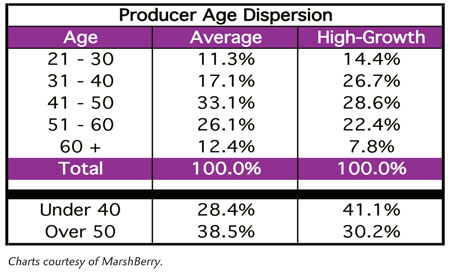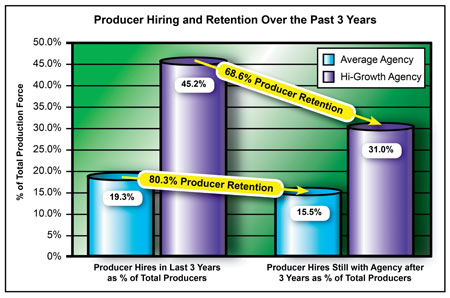|
Building Equity Value
"I don't want to sell insurance"
Why great salespeople don’t want to be insurance producers
By Art Betancourt
While recruiting talented sales professionals for the property/casualty insurance industry, we have sorted through thousands of online résumés. The thing we find most striking is that there is only one industry about which candidates ask not to be contacted. It is not medical sales, not pharmaceutical sales, not even used car sales. It is insurance sales. “No insurance, please!” is a request that is often posted on a job seeker’s résumé and commonly accompanies the person’s cover letter.
How did we get here, and why is insurance a dirty word in the job search market? How can we better communicate the benefits of sales careers in the insurance industry, making these positions the most desired instead of the most dreaded? And finally, what are successful agencies doing to recruit and hire great salespeople?
To see how this negative image of insurance sales was created, please take a few minutes to conduct a little experiment. It will be especially revealing if your agency is located in a mid-sized or large city.
Create a generic sales résumé and post it on a couple of the major online job search sites. Your inbox will soon be inundated with advertisements for positions in the insurance industry. Most, if not all, of the e-mails you receive will be work-from-home, hit-up-your-friends-and-family, Ponzi, or multi-level marketing schemes. Following is a typical example of what you will see:
“I want to tell you about a great opportunity. My business is to build a business and create a team of people to do what I do. Without getting into specifics, this may be something we could talk about further. We deal in mortgages, real estate, life insurance, and investments. The things we do are remarkable, and we have the capacity to create financial independence for so many families while creating significant wealth and positive cash flows for ourselves.”
If that doesn’t scream “scam,” I don’t know what does.
You don’t even have to be an active job seeker to get this impression of insurance sales positions—it is prevalent everywhere. Since great salespeople are getting flooded with fraudulent, fairytale job offers in the insurance industry, anything you send will only be drowned out by this “insurance noise.” They will have no idea that they have just added the job of their dreams to their junk mail filter.

Changing the perception
What can we do to show that this perception is not reality? Most great salespeople, regardless of industry, look for a few key attributes in any sales position, including:
• A great product to sell
• Business-to-business sales to large organizations
• The opportunity to make good money soon, and great money long-term
• Limitless income (Many organizations cap compensation for salespeople.)
• Eventual partnership or ownership opportunities
• Strong service staff
• Long-term stability (Downsizing and acquisitions have taken their toll on the candidate pool.)
Sales jobs in the commercial insurance arena have most, if not all, of these qualities. As an industry, historically we have emphasized the wrong job attributes and searched in the wrong candidate pool, or we have confined ourselves to the labor pool that has approached us. Once we begin highlighting the right attributes and refining where we are searching for candidates, the next step is to simply tell the best salespeople we’ve never talked to about the best sales job they’ve never heard of.
Now that you know what they are looking for in a job, you can tailor your strategy to reach them. After you gather a good pool of candidates, be sure to highlight the common, key attributes that great salespeople desire. By highlighting these attributes, you will win over many of the people you pursue. Just as a candidate’s résumé has only a few seconds to catch a recruiter’s attention, you have only a short amount of time to catch the candidate’s attention and change his or her mindset.

Surmounting the barriers
Even armed with a new approach to attract potential producers to your agency, you will still face barriers. The number one barrier to finding good production talent is not knowing how to find people. The second is making the time to do it. Many agency owners are either unwilling or unable to spend the time and money necessary to continually build out the production force. The one thing most agency CEOs lack is time. Realizing this, some 89% of high-growth agencies usually outsource this function to an outside recruiting firm.
Any way you choose to approach recruitment, it is important to remember that if you are not proactively searching for candidates, you will be limited to those candidates who knock on your door, and that is not the best way to find good production talent.
If you analyze the hiring practices of high-growth agencies, you will see that more than 40% of their producers are under age 40 (see chart at top) and that less than a third are over 50. Whereas recruiting efforts in most agencies are often sporadic, note that in high-growth agencies, it is a continuous process. Recruiting is not just something they do; it is part of who they are. They are relentlessly adding new, young producer talent, and grooming key employees for leadership positions early in their careers.
The old saying is true: “If you want to get something you’ve never had, you’ll have to do something you’ve never done.” If you are serious about organic growth in your agency, the question your organization needs to answer is: “Are we willing to take the time and commit the resources?” The average candidate search involves researching and reviewing hundreds of résumés, contacting the top candidates, and then spending as many as 30 hours on the phone to narrow down 50 to 60 applications to the top 10. To complete this process one time, 100 to 130 hours will be required.
Often this process will need to be repeated several times to find the right person. If you don’t outsource or have the kind of dedication internally to commit this amount of time, your potential for success is greatly diminished.
Cut loose underperformers
Along with maintaining a continuous focus on producer recruiting, high-growth agency owners also move quickly to release producers who are not working out. In the bottom chart, you will see that high-growth agencies not only hire more producers, but also quickly terminate those who are unsuccessful.
On average, high-growth agencies hire more than twice as many producers as the average agency. As illustrated, based on an agency of 100 people, the average agency hired 19 of them in the last three years, compared with the high-growth agency that hired an average of 45 during the same time period.
Furthermore, average agencies retain a higher percentage of the producers they have hired (80.3%) compared with high-growth agencies (68.6%). Again, as illustrated in the bottom chart on the previous page, based on a firm size of 100 people, three years later, the average agency still employs 15 of the 19 people it hired, while the high-growth agency retained only 31 of the 45 it hired.
By working to find and hire more high-quality candidates and quickly weeding out underperforming producers, high-growth agencies are able to continually restock their producer ranks, lowering the overall average age of their production force while retaining top talent. An average agency waits for producer talent to find it, hires them, and retains them because it is easier than going out to find the best candidates.
The talent pool is deep, and there are great salespeople just waiting for the right person to come along and introduce them to one of the greatest sales jobs they have never heard about.
The author
Art Betancourt is a search consultant at MarshBerry and can be reached at (903) 526-3206 or Art@MarshBerry.com.
|